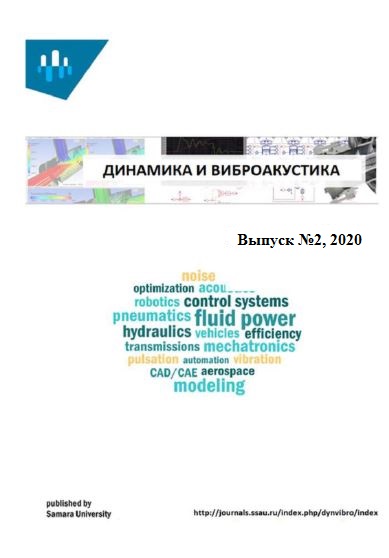Vol 6, No 2 (2020)
Articles
THE PERSPECTIVE USE OF VARIOUS VALVE SEAL DESIGNS FOR COMPONENTS, FUNCTIONING UNDER ULTRALOW TEMPERATURE AND DYNAMIC FORCE
Abstract
The need for the use of hydrogen as a proper substitution for kerosene-based aviation fuel is constantly growing. Research has been carried out to develop a fuel system that uses hydrogen since the previous century. The use of this fuel instead of kerosene-based fuel creates numerous technical issues. One of the most important issues is designing a seal for the valves, that would, by their design and the materials used, provide maximum durability and reduce the actuating force for sealing.
 6-11
6-11


HERMETIZATION OF VALVE SEALS FOR CRYOGENIC FLUIDS
Abstract
For units providing flow control for cryogenic fluids and operating under conditions of a significant change in the temperature range from positive to cryogenic and in a two-phase state of the working fluid, the problem of sealing the closure members of the units (valve pairs) becomes urgent.
Joint sealing is ensured by creating contact pressure in the joint through deforming the roughness peaks obtained by surface treatment of the valve pair.
The mechanical properties of the materials of the contacting valve pairs change significantly under the influence of cryogenic temperatures. First of all, the plastic properties are reduced, therefore, the creation of increased contact pressure is required.
The article presents a methodology for evaluation of changes in the microgeometry of contacting surfaces depending on the specific contact pressure. It also allows one to evaluate the conductivity of microgaps in the viscous and molecular regimes of fluid flow through contacting surfaces.
 12-19
12-19


ON THE CHOICE OF THE PARAMETERS OF VIBRATION DAMPERS FOR HYDRAULIC CIRCUITS OF CONTROL SYSTEMS
Abstract
The article deals with the problem of choosing OF the parameters of vibration dampers for hydraulic circuits of control systems, taking into account the provision of dynamic accuracy of the system after their installation. The concept of a correction factor, which is the ratio of Laplace images of the corresponding parameters of the working medium in the hydraulic circuit before and after the damper installation is introduced. A dependence that associate the relative deviation of the system-controlled parameter with the correction factor is obtained. A condition for checking the effectiveness of the damper, taking into account the preservation of the required quality of regulation in the system is formulated.
 20-25
20-25


ENSURING STABILITY OF HYDRO-MECHANICAL CONTROL SYSTEMS WITH CONSTANT PRESSURE VALVES
Abstract
In this article, theoretical dependencies for constructing the stability boundary of the system were determined. The influence of the characteristics of the connected circuits on the stability of the constant pressure valve is analyzed. To confirm the established theoretical dependences, experimental studies of the valve with the corresponding boundary conditions were carried out. As a result, oscillograms of valve tests were obtained for various connected lines.
 26-33
26-33


BENCH COMPLEX FOR SYNCHRONOUS MONITORING OF NOISE VIBRATION AND FUNCTIONAL CHARACTERISTICS OF ELECTROHYDRAULIC EQUIPMENT
Abstract
When creating specialized pumping test stands for hydraulic devices to check their vibration and noise characteristics, the main problem is the choice of pump type. This, in the first place, is connected with the different principle of operation of pumping units and the influence that the working organ exerts on the flow of liquid.
Currently, there is a wide range of pumps, differing in design, with different functional capabilities, supplying the working medium both at the nominal mode, and allowing to regulate supply and pressure parameters in a wide range. They are divided into two main groups: dynamic and voluminous. The choice of the pump for the needs of creating a stand determines its own vibra-tion characteristics of the entire system being created.
Proceeding from the made choice, it is necessary to determine the own charac-teristics of the created stand and, if necessary, to develop and apply a number of additional tools that allow improving the vibrational and noise characteristics of the stand being created.
The article presents the procedure for creating such a stand and describes the solutions that allow to combat the influence of the pump unit during the testing of hydraulics. The work was carried out using two types of pumps: axial-piston and centrifugal pumps. The following solutions were applied in the work: resonators, vibra-holding arrays, expansion tanks and flexible interchanges. The selection of the optimal combination and the correct calculation of the parameters of these means can significantly improve the intrinsic characteristics of the test stand being created and reduce own noise in the part of vibration and hydrodynamic noise.
 34-41
34-41











